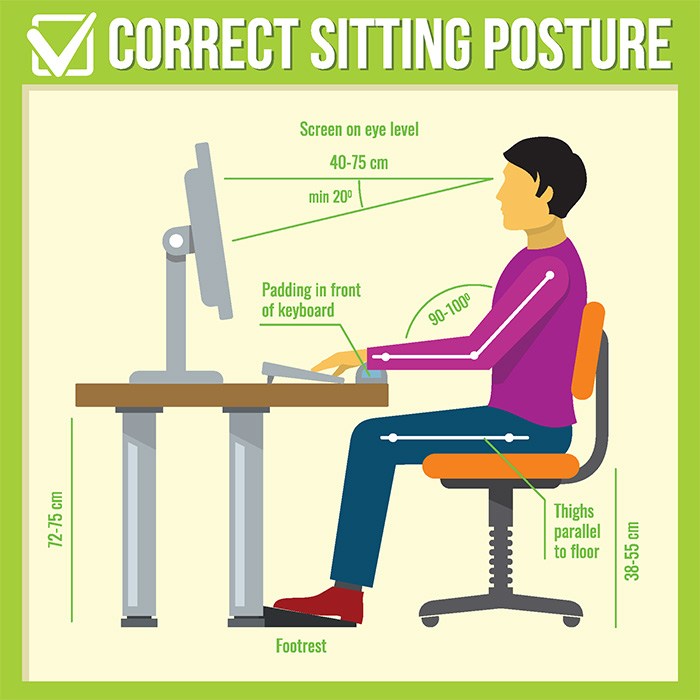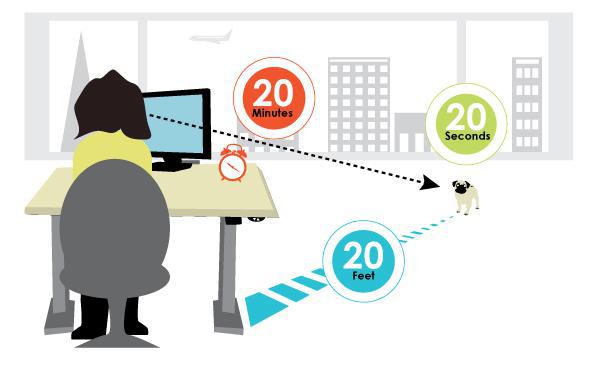Computer Vision Syndrome (CVS) is the complex of eye and vision problems related to near work which are experienced during or related to computer use. CVS is characterized by visual symptoms which result from interaction with any computer display unit or its environment, thus it is limited to the use of only computers however the use of smart phones, television, laptop and any electronic gadget you can think of which may be either LED, LCD or CRT. In most cases, symptoms occur because the visual demands of the task exceed the visual abilities of the individual to comfortably perform the task. CVS can be used to refer to the entirety of visual problems experienced by computer users; However, since there is not a single factor or visual disorder which causes the visual problems at computers, CVS encompasses many different symptoms, disorders and treatments. In addition to ocular related issues that may arise, musculoskeletal disorders and or repetitive strain injuries such as carpal tunnel syndrome, bursitis, muscle strains. etc may also come as a result.
Vision problems are pervasive among computer workers and are the source of worker discomfort and decreased work performance.
Symptoms
Most patients that report with computer vision syndrome to eye care facilities report with symptoms such as;
- Non-Specific Ocular Discomfort commonly known as Eyestrain
- Fatigue
- Headache
- Blurred Near Vision
- Blurred Distant Vision
- Neck and Back Aches
- Double Vision
- Burning Sensation on the Eye
- Dry Eye Sensation
As already mentioned CVS results from interaction not only with computer display units but also the environment, thus these symptoms are also related to other forms of near work and the awkward positions or postures that computer workers often assume in order to execute their work or assigned tasks. It may also be as a result of poorly designed work station, use of spectacles not designed for the tasks at hand, compensating for vision disorders such as binocular anomalies and diplopia.
Diagnosis of CVS required intricate look at variety of factors including but not limited to the refractive status, presbyopia, dry eye syndrome, accomodative disorders and binocular anomalies
CVS is treatable with very good prognosis, eliminating or reducing the presenting symptoms.
Treatment
Uncorrected or improperly corrected presbyopia can also result in symptoms. Hyperopia can result in visual symptoms - especially in near workers. Uncorrected astigmatism can also cause symptoms because of the acuity demands of the task. In some cases myopia can cause a blurred view of the computer screen and/or awkward posture.
In Such Cases Refraction from your Optometrist should help improve the situation if not completely eliminate the symptoms, the use of anti-reflective should protect you from the rays that emanate from the pixels on the screen whiles correcting your error should allow the eye to relax and work more comfortably
A dry eye condition is one which can be exacerbated by computer work due to: staring, elevated gaze angle, decreased blinking, and a low humidity environment.
Patient may require tear supplementation in addition to practicing good visual hygiene such as taking breaks in between works, practicing the 20-20-20 rule. and Good Working Posture
Environmental Factors
There are particular environmental factors associated with working with computers or display units which make it more visually demanding than other near point tasks. Some of these include;
- Contrast and resolution of the display
- Viewing distances and angles
- Adjustability of workstation
- Room lighting
- Sustained viewing
Control or elimination of environmental factors can effectively reduce the symptoms associated with computer vision syndrome.
Some problem that may arise from these environment factors include;
- Physical fatigue,
- Decreased productivity,
- Increased numbers of work errors(ie. decreased acuracy) and
- Eye twitching
Management
Some simple steps both workers and employers can take to reduce computer vision syndrome and its impact at the work place and at home include;
- Getting a computer eye exam
- Use of proper lighting to minimize glare
- Upgrading your display unit from CRT to LCD and or to LED
- Adjusting the brightness and contrast of your computer screen in accordance with the illumination in the environment to minimize or remove glare.
- Blinking More Often (Make more effort and be conscious of it)
- Taking frequent breaks to stretch your muscles and relax the eyes
- Modifying your workstation to ease stress on you muscles, bones and eyes. Adopt the use of adjustable chairs with head rest. And avoid keeping you screen at 90 degrees with the eye, try adjusting it to about 60 degrees for more comfort.
- Adopt the use of computer eye wear, see your optometrist for options and in finding one that works best for you.
20-20-20 RULE
The 20-20-20 rule stipulates that one should take a break after 20 minutes of looking at the screen to observe something 20 feet away for the 20 seconds. This should help remind you to take frequent breaks.
References
Loh, K., & Redd, S. (2008). Understanding and preventing computer vision syndrome. Malaysian family physician : the official journal of the Academy of Family Physicians of Malaysia, 3(3), 128–130.
Blehm C, Vishnu S, Khattak A et al. Computer vision syndrome: a review. Surv Ophthalmol 2005;50(3):253–262. doi: 10.1016/j.survophthal.2005.02.008
www.aoa.org/patients-and-public/caring-for-your-vision/protecting-your-vision/computer-vision-syndrome





The thing that helped me most was an e-ink monitor: http://www.dasungtech.com/
Also, setting a timer for 25 mins (or whatever works for you) and taking a 5-min break afterwards. Then repeat.
That's cool, there are so many ways of killing a cat, so long as it works for you it should be ok
Thanks for your contribution to the STEMsocial community. Feel free to join us on discord to get to know the rest of us!
Please consider supporting our funding proposal, approving our witness (@stem.witness) or delegating to the @steemstem account (for some ROI).
Please consider using the STEMsocial app
app and including @steemstem as a beneficiary to get a stronger support.
Thanks for the love and support, it is great to be part of this community, funding approved, witnessed voted